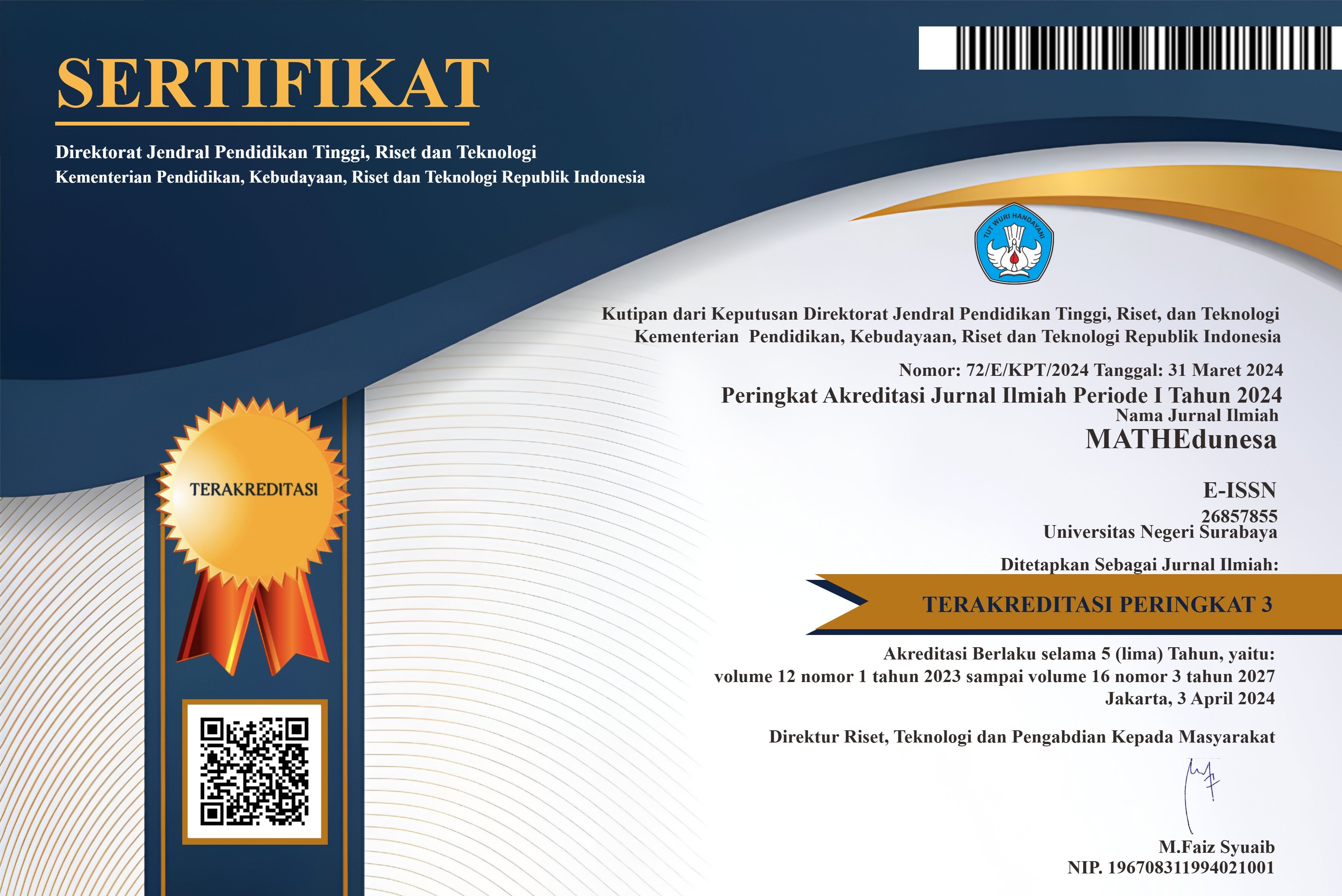Pengembangan E-Modul Pembelajaran Matematika SMP Materi Kekongruenan dan Kesebangunan Bermuatan Etnomatematika
Abstract
One of the materials of geometry that is difficult for students to understand is coherence and coherence, that is, the lack of examples that occur in real life in a cultural sphere called ethnomathematics. Efforts to overcome the difficulties of learners in the material one of which is the use of the concept of E-modules that can be an alternative in the teaching and learning process. This research aims to describe the development process of the E-Module learning media on the topics of congruence and similarity in terms of validity, practicality, and effectiveness. This study employs the ADDIE development model, which consists of five stages: Analysis, Design, Development, Implementation, and Evaluation. In the Analysis stage, performance, students, curriculum, and media were analyzed. The Design stage involved the preparation of materials, creation of instruments (interview guidelines, media validation sheets, material validation sheets, student response questionnaires, pretest and posttest questions), and the creation of flowcharts and storyboards. The Development stage included the development of an Android-based E-Module, validation by media and material experts, media revisions, and limited trials. During the Implementation stage, the E-Module was implemented with ninth-grade students at SMP Negeri 2 Sukodono. The Evaluation stage involved analyzing the results of the conducted research. The learning media was deemed highly valid by media experts with a validation score of 60.2% in the first stage, which was subsequently revised to achieve a score of 80.8% with a highly valid criterion in the second stage. Material experts rated the media with a score of 86.8%, also within the highly valid criterion. Additionally, the validity of the pretest and posttest questions received a score of 85.7%, meeting the highly valid criterion. The learning media was considered practical with a student response questionnaire score of 83.5%, categorized as very practical. The learning media was also deemed effective, with a significant difference between the students' scores before and after using the E-Module, further evidenced by an average N-Gain score of 0.88, which falls under the high criterion.
Downloads
Downloads
Published
Issue
Section
 Abstract views: 156
,
Abstract views: 156
, PDF Downloads: 167
PDF Downloads: 167




